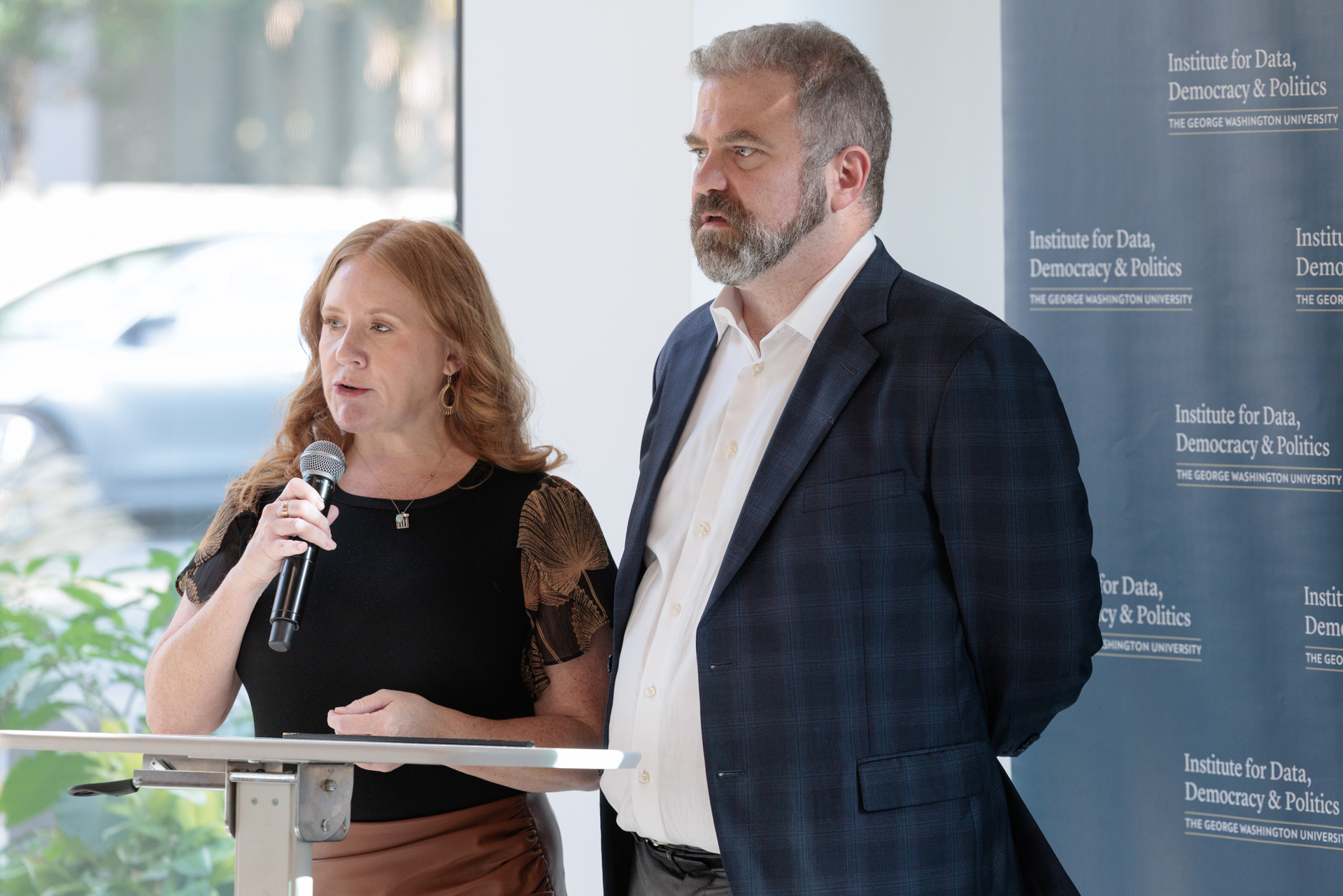Borrowing a line from the hit HBO drama series “Game of Thrones,” George Washington University Graduate School of Political Management (GSPM) Professor and Program Director Todd Belt opened a 2025 post-election recap panel by asking whether “winter is coming” for Republicans after a string of Democratic gains.
After an hour-long virtual dissection Tuesday, panelists concluded that perhaps last week’s results were more of a cold front than a full seasonal change as voters across key states—New York, New Jersey and Virginia—appeared to respond less to party labels and more to authenticity, affordability and basic functionality.
Former Florida congresswoman and current GSPM Executive Director Debbie Mucarsel-Powell, and alumni and GSPM lecturers Anne Caprara, M.A. '03, chief of staff to Illinois Gov. J.B. Pritzker; and communications strategist Stami Turk, M.P.S. ’16, joined Belt to analyze the off-year election that saw Democrats win two key gubernatorial races and a telling mayoral race in the nation’s biggest city.
They agreed that concerns over everyday issues such as rising costs and services, as was the case in the 2024 election where President Donald Trump and Republicans flipped the White House and Senate, remained for voters in 2025.
Mucarsel-Powell noted that at the end of the day, people want things to run smoothly. They want their trash picked up, their public transportation to arrive on time and their gas and grocery bills to be reasonable.
“If we're not delivering, whether the Republicans are in power or the Democrats in power, you will see a referendum on that government, and I think that's part of what we saw on Tuesday,” said Mucarsel-Powell. “It doesn't determine anything going into 2026. But at the end of the day, I think that leaders need to take responsibility for serving the people.
“What every single person wants is government to work for us.”
Belt pointed out that local issues remain decisive in shaping outcomes even amid national polarization, while Caprara said that these off-year election races especially tend to reflect how people feel about what’s right in front of them rather than their ideological leanings. That focus, the panelists agreed, produced varied outcomes across states. Turnout rose in New York and New Jersey but fell in Virginia, where Turk said GOP investment lagged.
The panelists spent much of their discussion exploring how authenticity has become an essential campaign tool. Caprara described a “sea change” in political communication that social media, short-form video and direct engagement now drive.
She cited New York City Mayor-elect Zohran Mamdani as a case study in digital connection. His “happy warrior” persona and relatable clips, Caprara said, showed how “being intensely yourself” can resonate with voters in ways traditional messaging cannot. Mamdani, a political unknown just a year ago, defeated establishment Democrat and former New York Gov. Andrew Cuomo in both the June primaries and then again in the general election last week.
By also not hiding his fandom for his favorite New York teams, bodegas and bagel orders, he perhaps made voters feel something, especially noteworthy in a world where artificial intelligence and deepfakes are becoming more and more commonplace in campaigning.
“I actually think that the kind of Mamdani strategy is a way to combat a lot of [AI and deepfakes], which is to be so authentically yourself and out and about in the community,” she said. “Figuring out what your candidate feels most authentic doing, and then letting them do that feels like a winning strategy.”
If authenticity fueled connection, enthusiasm determined turnout, especially in New York and New Jersey, as Caprara noted that Democrats held the enthusiasm that Republicans had last year.
In New Jersey specifically, Trump came within six points of flipping the state red for the first time in a presidential election since 1988. But a year later, Mikie Sherrill conjured up enthusiasm among the state’s Democrats that Jack Ciattarelli couldn’t among Republicans. Sherrill won by 13 points and flipped five counties Trump won in 2024, which were counties that Trump flipped from Joe Biden four years before that.
“Trump wasn’t on the ballot for the governor’s race, and [Trump and Ciattarelli] are two completely different people,” said Turk, the communications director for Ciattarelli’s 2021 campaign for governor. “There were hundreds of thousands of people who voted for President Trump in 2024 [nationwide] that sat it out in 2025, and that was something we saw a lot of in 2021.”
Turk also noted that Sherrill, like Mamdani in New York, offered New Jersey Democrats a fresh voice compared to outgoing Democratic governor Phil Murphy, who had a lower approval rating statewide than Trump at the beginning of October.
The environment of the state and candidate quality could more easily explain Virginia’s results, where moderate Democrat Abigail Spanberger cruised to the governor’s mansion over relatively unpopular Republican Winsome Earle-Sears—whom Trump did not endorse—in a state that could be considered ground zero for DOGE cuts and effects of the recent federal government shutdown impacting the constituents.
As 2026 approaches, the panelists said, campaigns that deliver tangible results and credible voices will likely fare best. Caprara said that these 2025 results showed that even in a volatile political era, outcomes are still determined by a voter’s focus on everyday performance.
For now, the political winds may have shifted. But, GW experts said, it’s too early to tell when—or if—the storm will arrive.
“Your fortunes can change literally in the span of 12 to 24 months,” Caprara said. “We’ve entered a new era of campaigns, and voters are paying close attention.”





